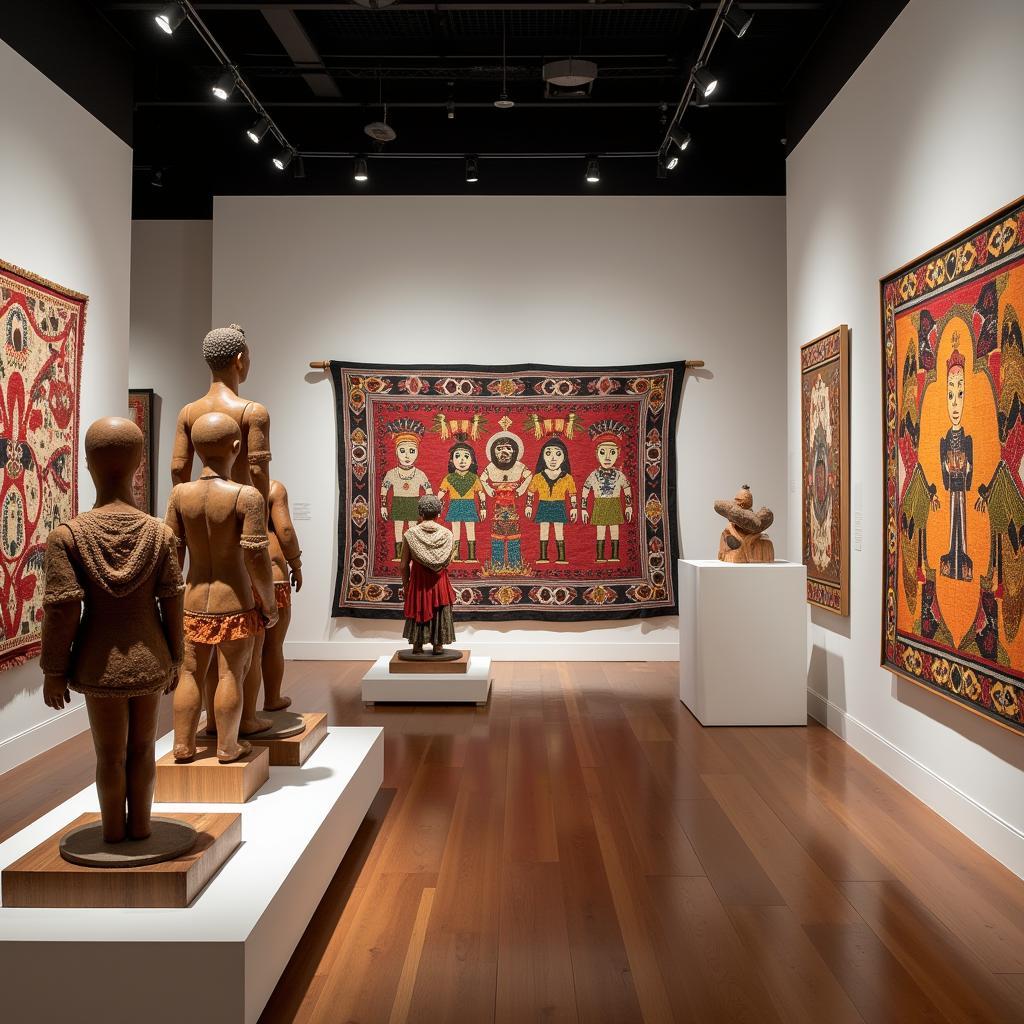Unmasking the Power and Beauty of Arte Indigenista
Arte Indigenista, a vibrant and compelling art movement, goes beyond mere aesthetics. It delves into the heart of indigenous cultures, amplifying their voices, traditions, and struggles through evocative visual storytelling. Rooted in the Americas, arte indigenista emerged in the early 20th century, challenging colonial narratives and celebrating the resilience and richness of indigenous identities.
 Exhibition of Indigenous Art
Exhibition of Indigenous Art
A Journey of Reclamation and Recognition
Arte indigenista was born out of a need for cultural reawakening. Indigenous communities, long marginalized and misrepresented, found a powerful tool in art to reclaim their narratives and assert their presence on their own terms. This movement became a vehicle to challenge stereotypes, dismantle prejudices, and foster a deeper understanding of indigenous cosmologies, philosophies, and artistic expressions.
One of the hallmarks of arte indigenista is its profound connection to nature. Artists often draw inspiration from the natural world, incorporating indigenous knowledge systems and spiritual beliefs into their works. From the vibrant hues of Amazonian rainforest flora to the intricate patterns found in Andean textiles, nature serves as both a muse and a testament to the harmonious relationship indigenous communities share with their environment.
Beyond Aesthetics: A Voice of Resistance and Resilience
Arte indigenista transcends purely decorative purposes. It serves as a powerful tool for social commentary and political activism. Artists use their work to address critical issues affecting their communities, such as land rights, environmental degradation, cultural appropriation, and the ongoing struggle for self-determination.
Through striking imagery and symbolism, they bring to light the injustices faced by indigenous peoples and challenge the dominant narratives that have historically silenced their voices. By engaging with these issues through art, arte indigenista sparks dialogue, raises awareness, and inspires action.
A Global Movement: Bridging Cultures and Connecting Generations
While rooted in the Americas, arte indigenista’s impact extends far beyond geographical boundaries. It has sparked global conversations about cultural preservation, indigenous rights, and the importance of amplifying marginalized voices. The movement has also fostered a sense of solidarity and exchange among indigenous artists worldwide, allowing them to share their stories, techniques, and experiences with a wider audience.
Conclusion
Arte indigenista stands as a powerful testament to the enduring strength and resilience of indigenous cultures. By celebrating their artistic heritage, amplifying their voices, and challenging dominant narratives, this movement continues to pave the way for greater understanding, respect, and appreciation for the diverse tapestry of humanity. By engaging with arte indigenista, we embark on a journey of cultural discovery, unmasking the beauty, wisdom, and resilience that indigenous communities contribute to the world.
